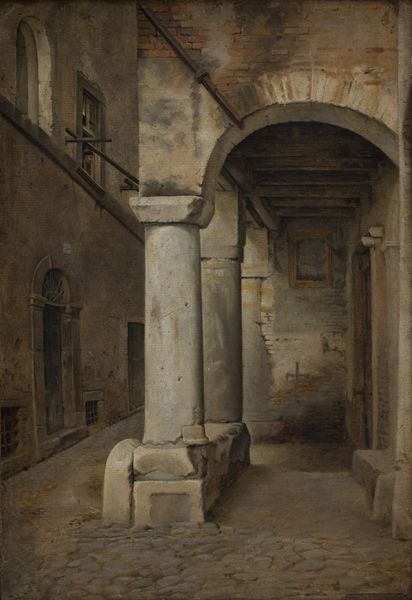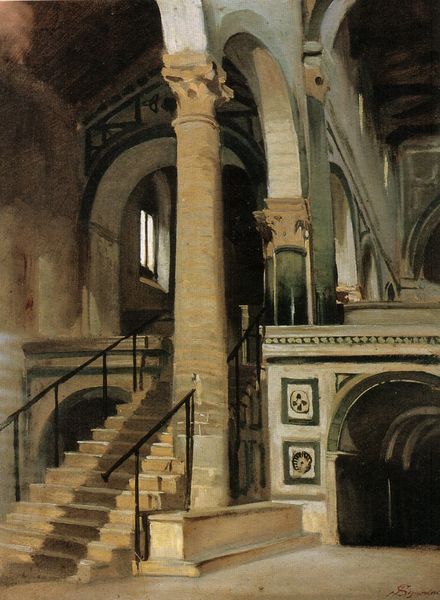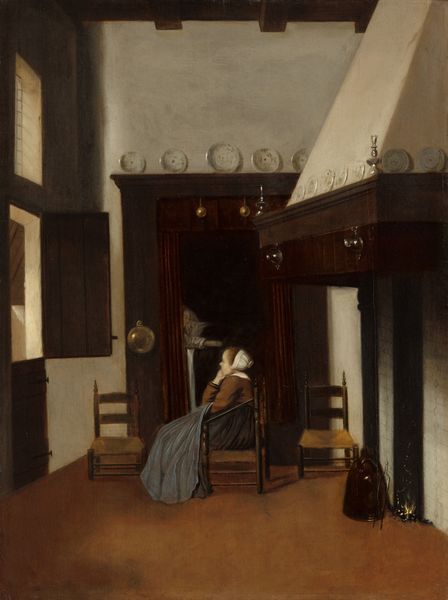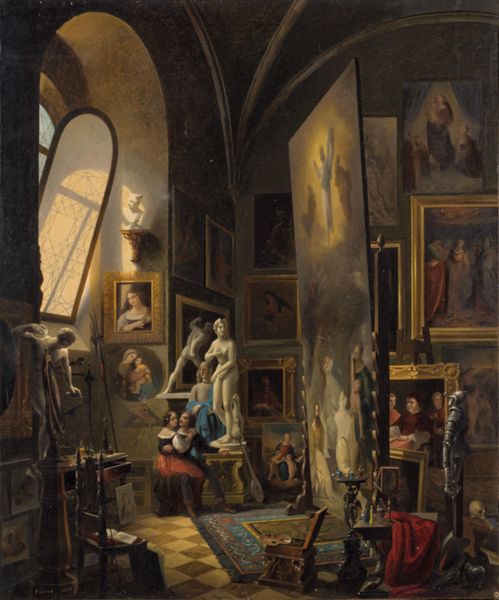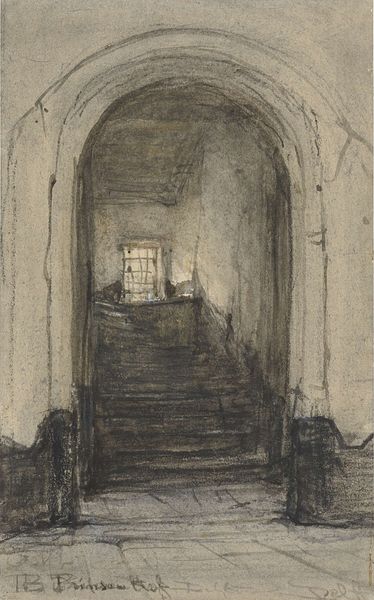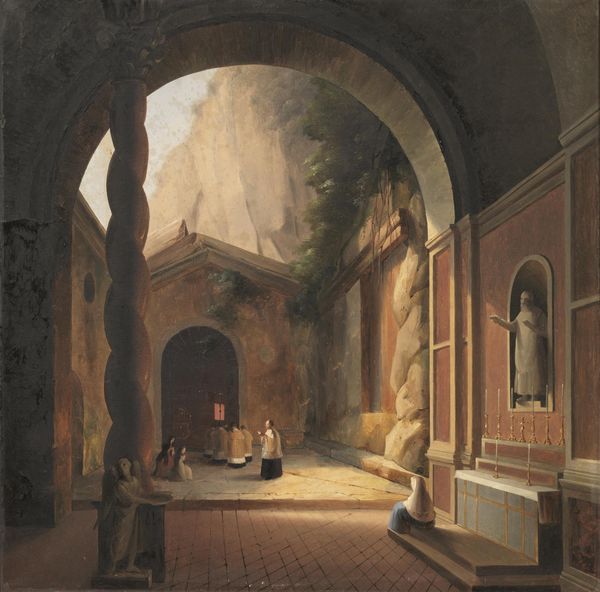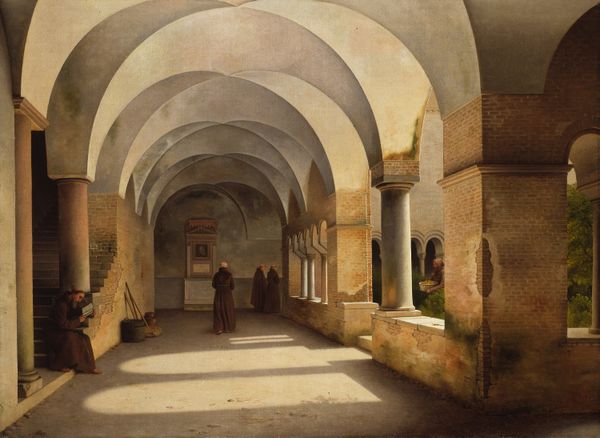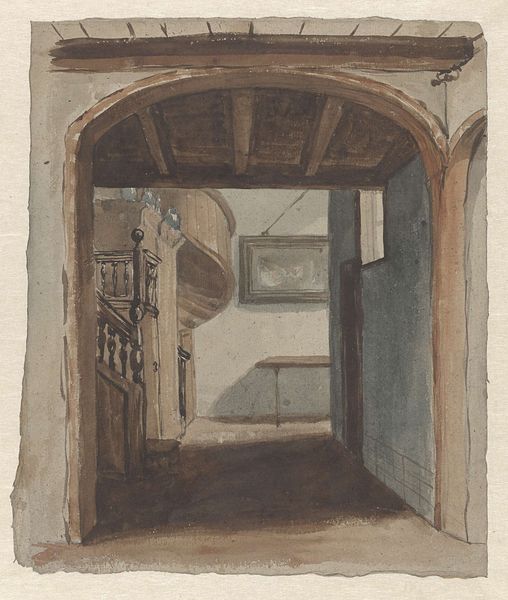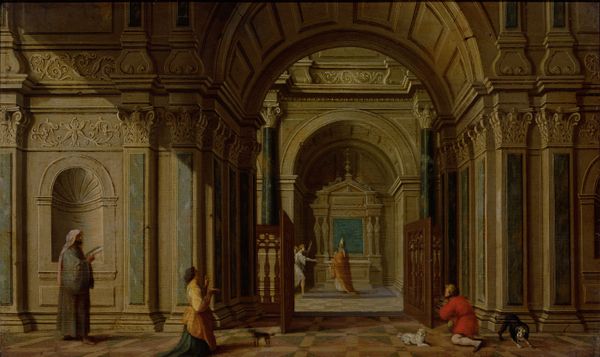
Portal of a stairway tower, with a man descending the stairs: presumably the moment before the assassination of William the Silent in the Ptinsenhof, Delft 1640 - 1664
0:00
0:00
painting, oil-paint
#
narrative-art
#
dutch-golden-age
#
painting
#
oil-paint
#
genre-painting
Dimensions: height 49.5 cm, width 40 cm, depth 6.5 cm
Copyright: Rijks Museum: Open Domain
Editor: This is "Portal of a stairway tower, with a man descending the stairs: presumably the moment before the assassination of William the Silent in the Ptinsenhof, Delft," created sometime between 1640 and 1664 by Egbert Lievensz. van der Poel, using oil paints. I am really drawn to how the artist captures this intimate and unsettling moment, making you feel as though you are right there with the man and his dog descending the stairs. What jumps out at you? Curator: It's striking how van der Poel uses a genre scene setting to engage with the weighty themes of political intrigue. While ostensibly showing everyday life, the inscription implicates the image within broader anxieties regarding Dutch independence and political stability. How does the dog's posture strike you, given this interpretation? Editor: That’s fascinating. The dog does look quite alert, almost anxious, like he knows something is amiss. So, you’re saying the dog acts as a kind of warning? Curator: Exactly. It is also useful to consider the social function of art. Commissioned works served to express the interests of powerful parties and families. Can you see evidence of wealth or class? How does it affect your viewing of this piece? Editor: I do. There are expensive decorative objects, armor... It reframes how I view it now because it's more of a story for someone on top commenting on those that were making life more dangerous, maybe the story they wanted told about how power operates in times of upheaval. Curator: Precisely. By embedding a politically charged event in domestic trappings, Van der Poel crafted a commentary on power, paranoia, and the ever-present threat to stability in the young Dutch Republic. Editor: I see it so differently now; thinking about this not as a quiet glimpse into daily life, but really as a political narrative framed within a specific historical and social context. Curator: Indeed. Art constantly interacts with historical narrative and its present audiences.
Comments
No comments
Be the first to comment and join the conversation on the ultimate creative platform.

